
When going to Japan, it’s easy to confuse temples and shrines.
But they are quite different.
Temples are Buddhist sites, while shrines are Shinto sites. It’s even more confusing by the fact that there are some areas that meld the two religions together. And that they co-exist, so at times, you will find a temple and shrine together.
Buddhism is a religion and dharma that encompasses a variety of traditions, beliefs and spiritual practices largely based on the original teachings of Buddha. The religions originated in Ancient India between 6th and 4th BCE and spread throughout Asia.

The huge Hozomon Gate ~Niomon Gate~ prior to entering Senso-ji Temple in Asakua. Built in 942 by military commander Taira no Kinmasa, he offered prayers at Senso-ji in hopes of becoming the lord of Musashi province (Tokyo) and built the gate for his wishes to come true.
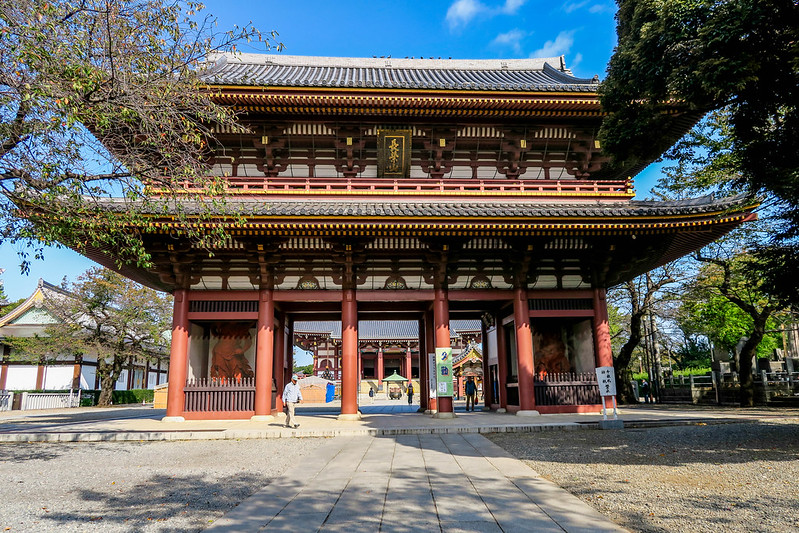
Gate at Ikegami Honmon-ji Temple in Ota, Tokyo

The gate leading into Shibamata Taishakuten in Katsushika.
Temples are places where people go to pray to their ancestors and where people go for funerals. Temples can often be fairly large and they have a distinct feature and it’s their roofs. Also, temples often have a romon gates (think huge wooden gates leading to the temple). Please note: You may also find a romon at a shrine.
Shinto (Kami no Michi) is an ethnic religion of Japan focusing on ritual practices to establish a connection between present-day Japan and its ancient past. Shinto practices were first recorded and codified in historical records oft he Kojiki and Nihon Shoki in the 8th Century. But back then, it was not referred to a unified “Shinto religion but a collection of native beliefs and mythology.
Shrines are often used to celebrate life and worship a multitude of gods (kami) and have a variety of sects. So, you will not see funerals at shrines, but you will see weddings, festivals, prayers for success, etc.

The large Torii gate leading to Meiji Shrine

Daiichi Torii leading to Yasakuni Shrine
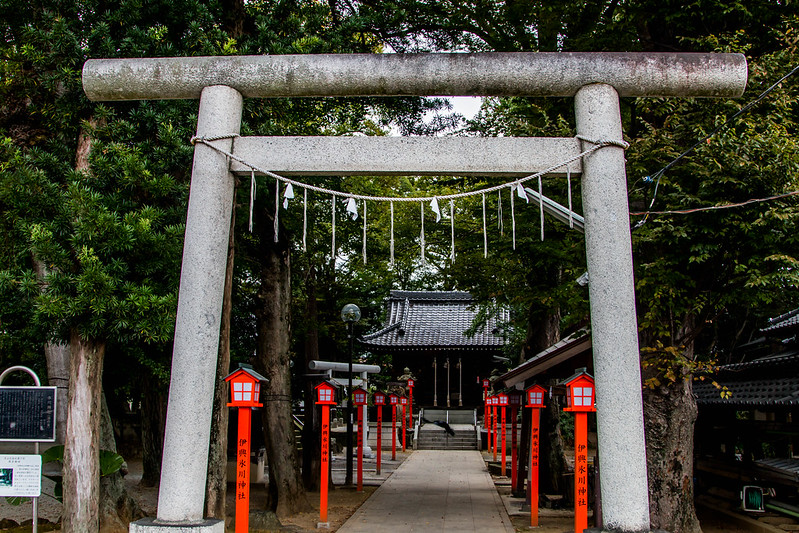
Torii at Hikawa Shrine in Adachi, Tokyo
Many shrines are much smaller compared to the huge temples and instead of a romon, you may find a torii gate. But some shrines do offer a romon.
Here are a few well-known temples in Tokyo:
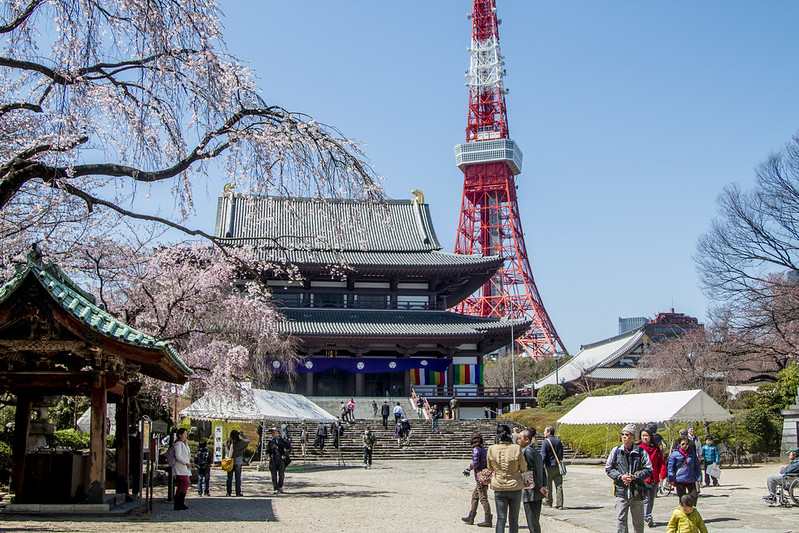
Zoji-ji Temple in Minato, Tokyo. It is the Great Main Temple of the Chinzei branch of Jōdo-shū Buddhism. The main image is of Amida Buddha. The founder of Zōjō-ji was Yūyo Shōsō.
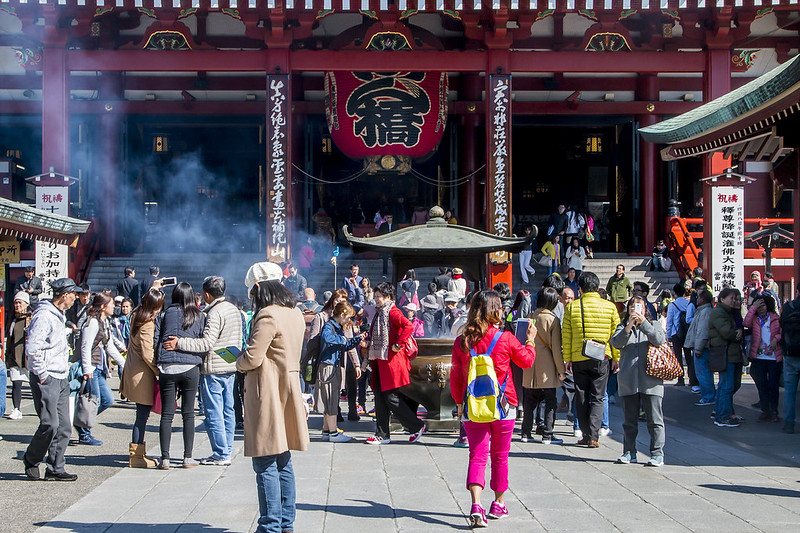
Sensō-ji is an ancient Buddhist temple located in Asakusa, Tokyo, Japan. It is Tokyo’s oldest temple and was formerly associated with the Tendai sect of Buddhism. It became independent after World War II.
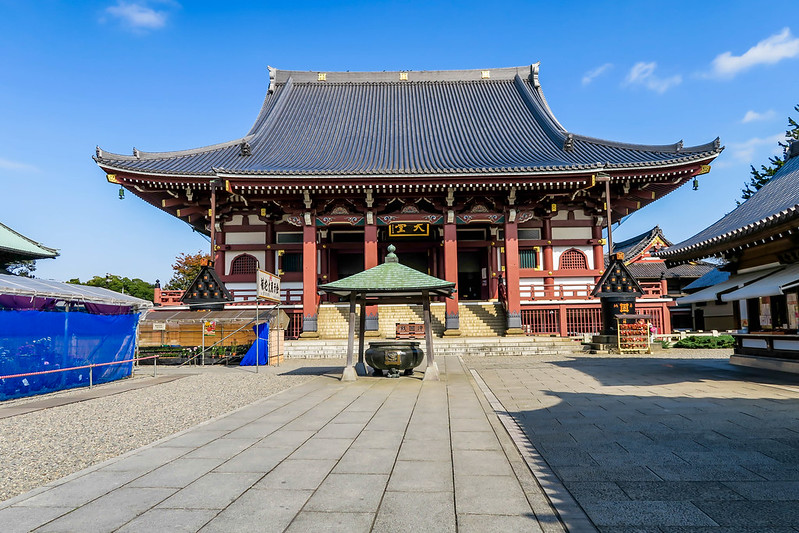
Ikegami Honmon-ji is a temple of the Nichiren Shū located in Ikegami, Ota, Tokyo and was erected where Nichiren is said to have died.
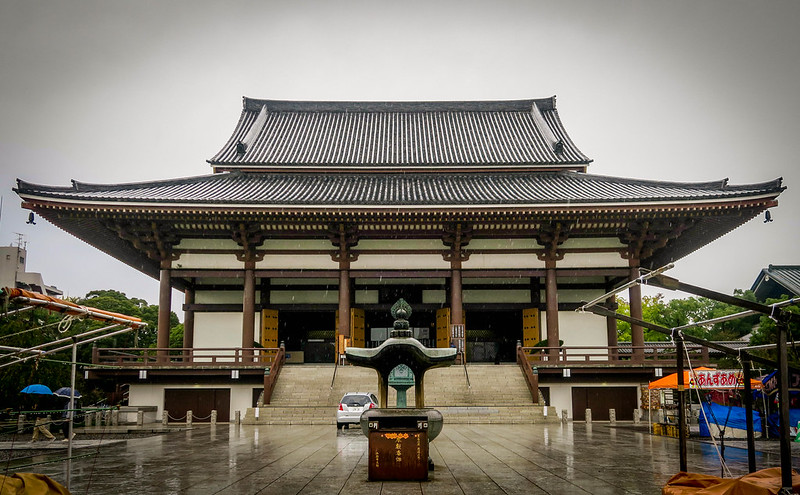
Nishiarai Daishi, located in Nishiarai, Adachi, Tokyo and is a temple of the Buzan branch of Shingon Buddhism. Its formal name is Gochisan Henjōin Sōji-ji.
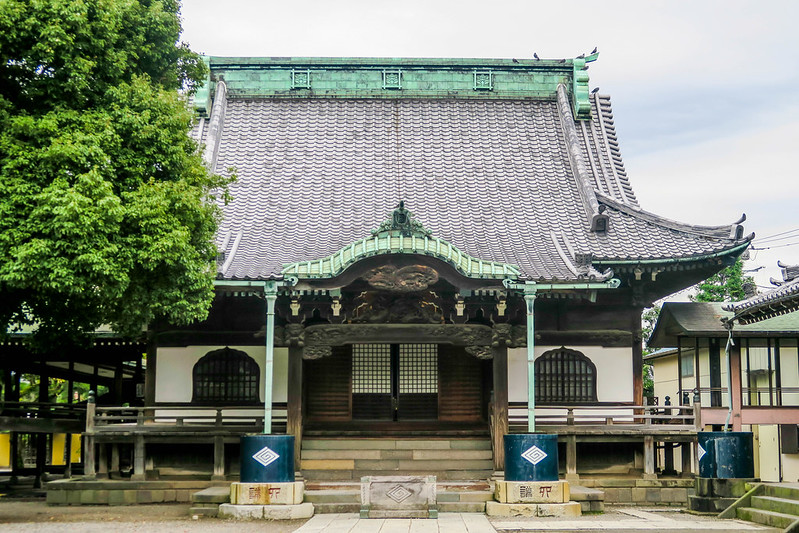
Shibamata Taishakuten is a Buddhist temple in Katsushika, Tokyo, Japan. Founded in 1629, the main image is of Taishakuten.
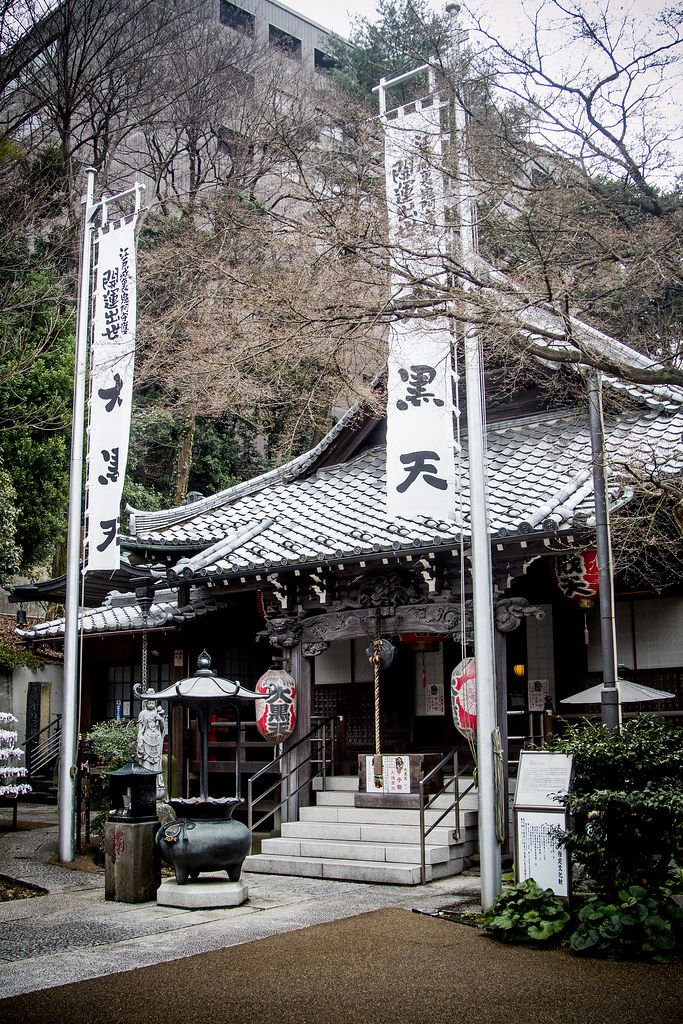
Daienji is a small Buddhist temple in Meguro, Tokyo and is of the Tendai sect and was built in 1624 by a priest named Daikai.
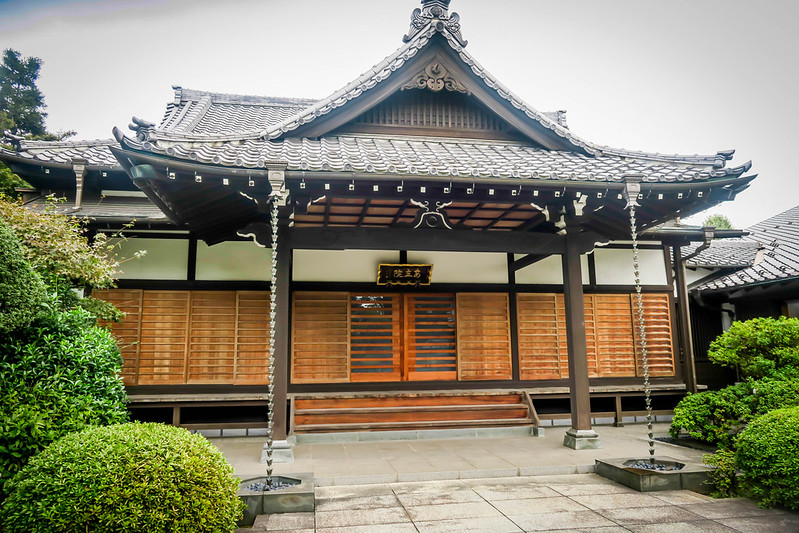
Gokokusan Tennoji Temple in Yanaka. Belonging to the Tendai sect of Buddhism and founded in 1274.
Here are a few well-known shrines in Tokyo:
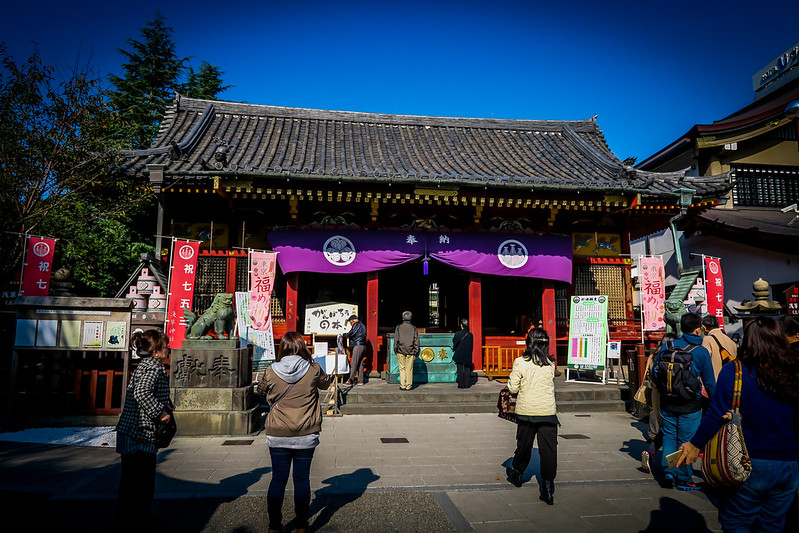
Right across from Senso-ji Temple in Asakusa is Asakusa Shrine also known as Sanja-sama . Asakusa Jinja honors the three men who founded the Sensō-ji.
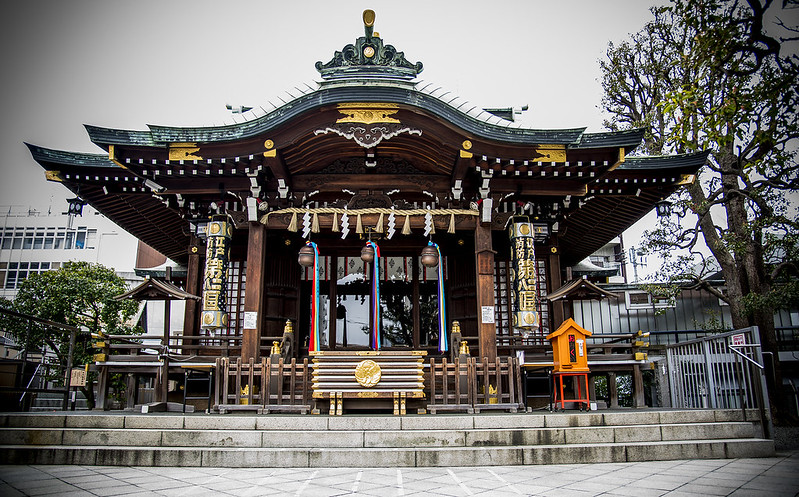
The Otori-jinja shrine in Meguro is known for having a huge festivals in September and their largest “Tori no Ichi” Festival in November. The location for weddings, rituals and even exorcisms.
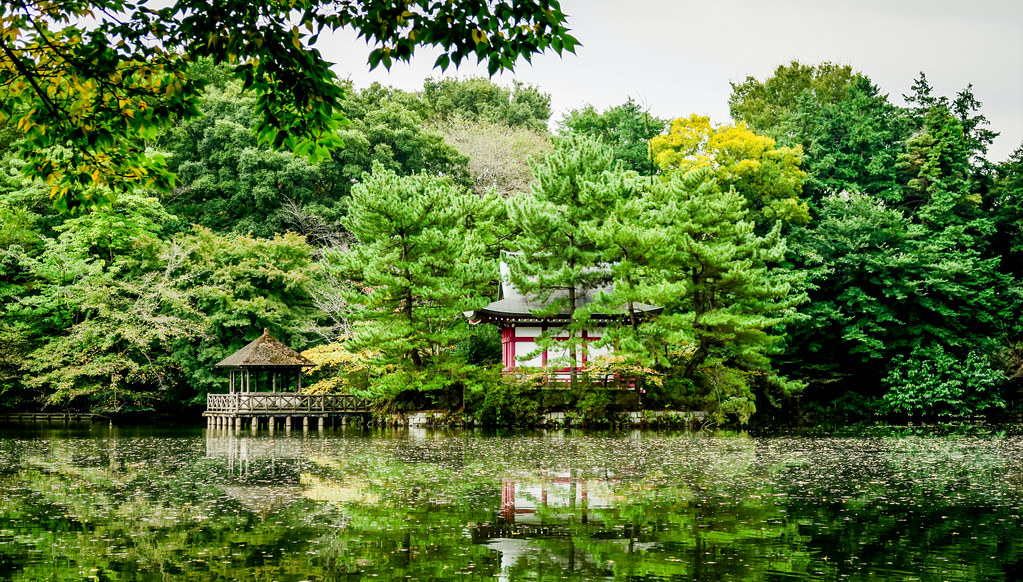
Itsukushima Shrine at Shakuji Park in Nerima, Tokyo
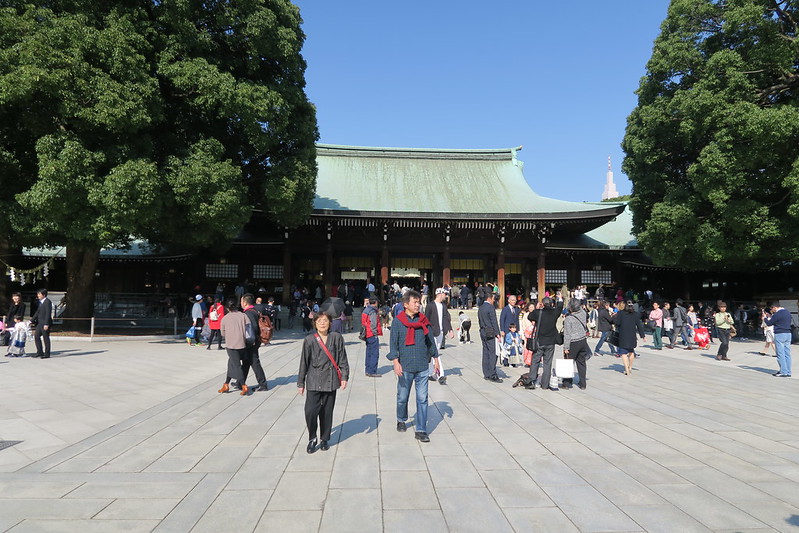
Meiji Shrine in Shibuya, Tokyo, is the Shinto shrine that is dedicated to the deified spirits of Emperor Meiji and his wife, Empress Shōken.

Koroku Shrine in Adachi, Tokyo next to Kohoku Station.
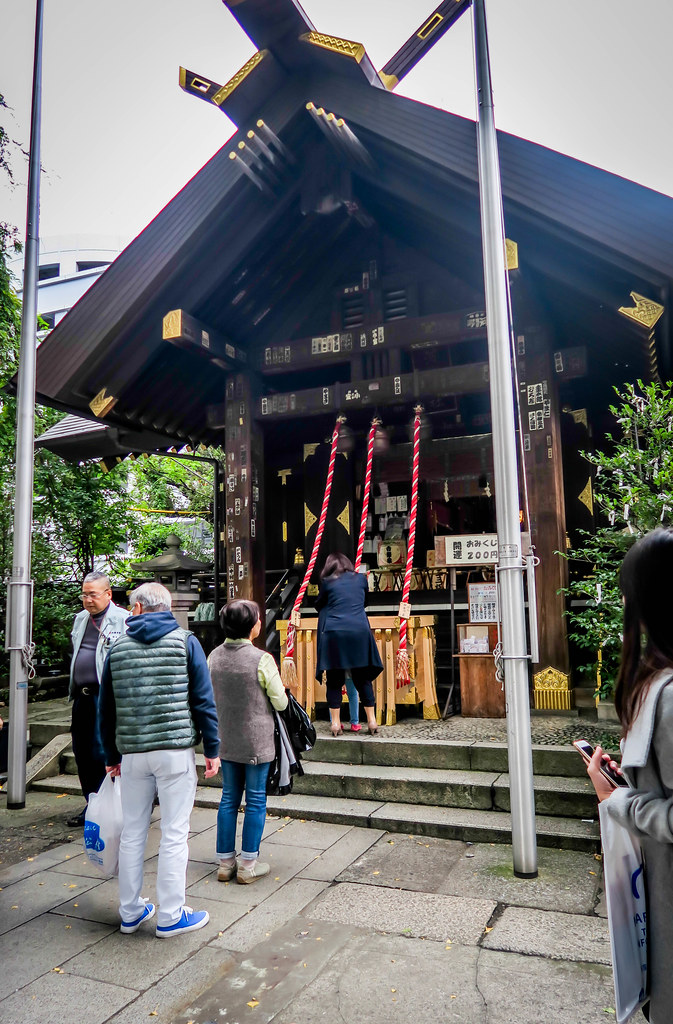
Namiyoke Inari Shrine (which means “protection from waves”) right next to Tsukiji Fish Market.
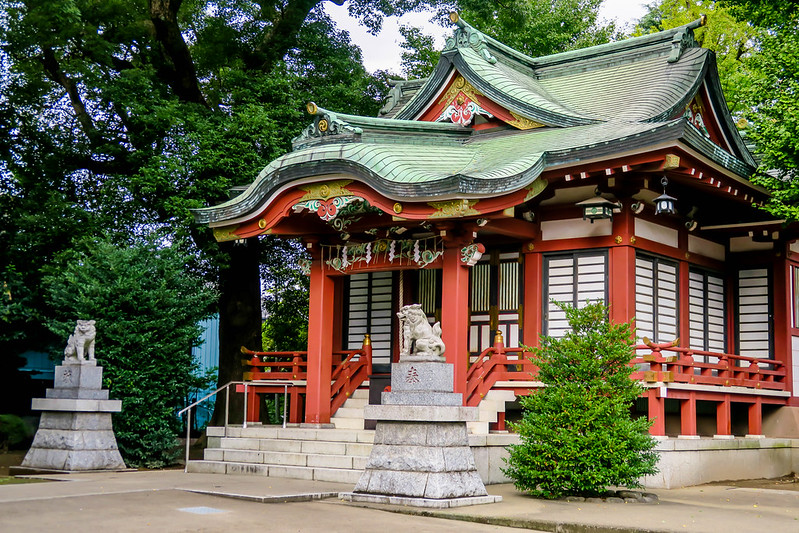
Shibamatahachiman Shrine in Katsushika, Tokyo.
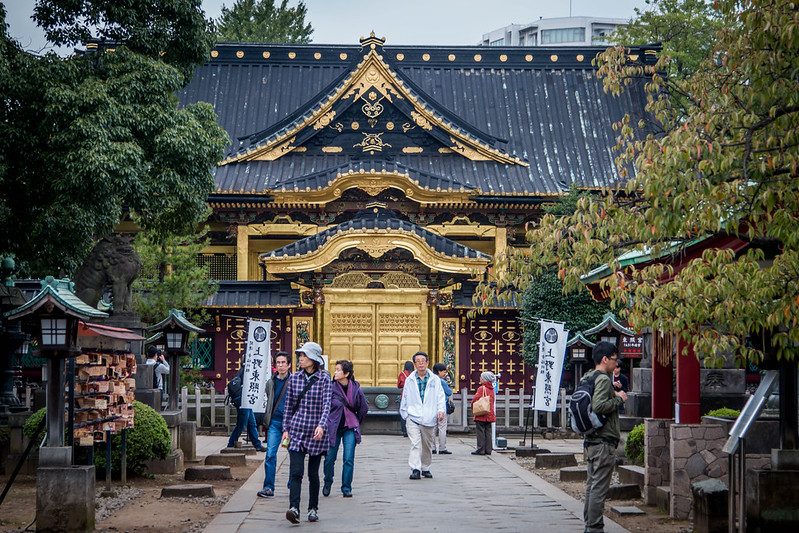
Tosho-gu Shrine in Ueno. The shrine is where Tokugawa Ieyasu, the founder of the Tokugawa shogunate, the third and last of the shogunai governments in Japanese history, is enshrined.
Overall, both are worth visiting. You can learn a lot about the culture and religion from a temple and shrine but discover something unique at these locations.
